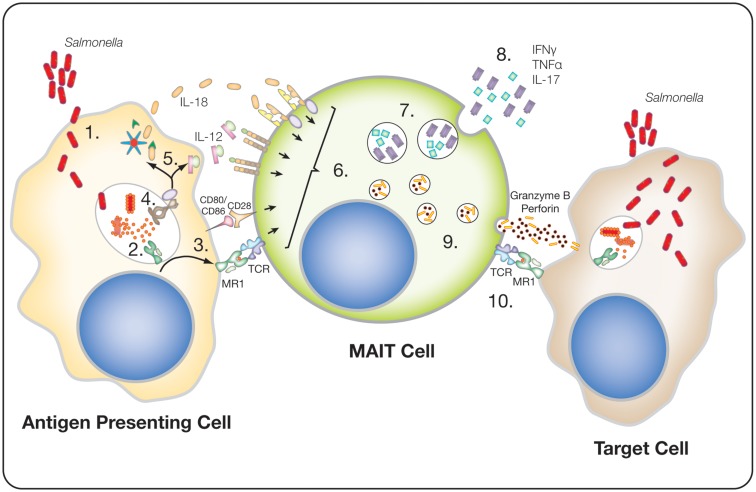Figure 1.
Potential MAIT cell response to Salmonella infected cells. (1) Internalization of Salmonella by an antigen-presenting cell, either through infection or actively by phagocytosis. (2) Lysis of the bacteria, within endocytic compartments, releases 5-A-RU, which is converted to 5-OE-RU or 5-OP-RU and binds to and stabilizes MR1. (3) The stable MR1 translocates to the cell surface, where it is presented along with other co-stimulatory molecules, e.g., CD80 or CD86. (4) Bacterial components trigger pathogen recognition receptors (PRR), such as TLR8. (5) PRR triggering drives cytokine expression, such as IL-12, and the activation of the inflammosome, resulting in the release of active-IL-18. (6) MAIT cells are activated either by TCR recognition of MR1 in combination with co-stimulatory receptors, e.g., CD28, and/or by cytokines, e.g., IL-12 and IL18. (7) Activated MAIT cells express pro-inflammatory cytokines, e.g., IFNγ, TNFα, and IL-17. (8) These cytokines can directly act anti-bacterially, or recruit and stimulate other immune cells, e.g., neutrophils by IL-17. (9) Activation of MAIT cells upregulates perforin and granzyme B expression. (10) Theoretically, the degranulation of cytotoxic granules into infected cells (target cells), via recognition of MR1, could induce cell death and, thus, the potential clearance of infected cells.

